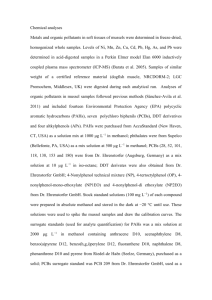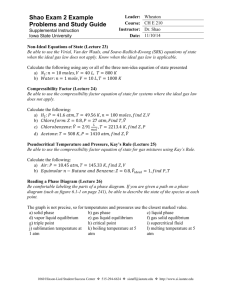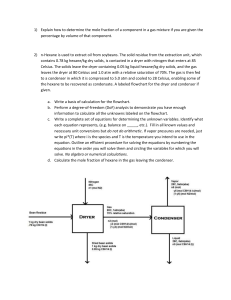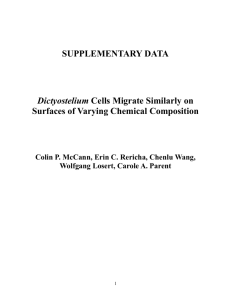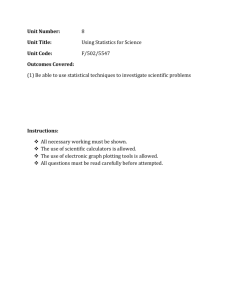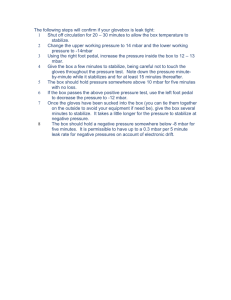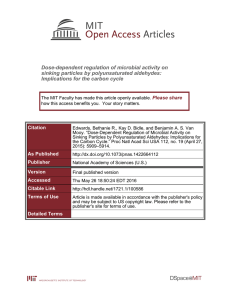lno10106-sup-0001-suppinfo01
advertisement
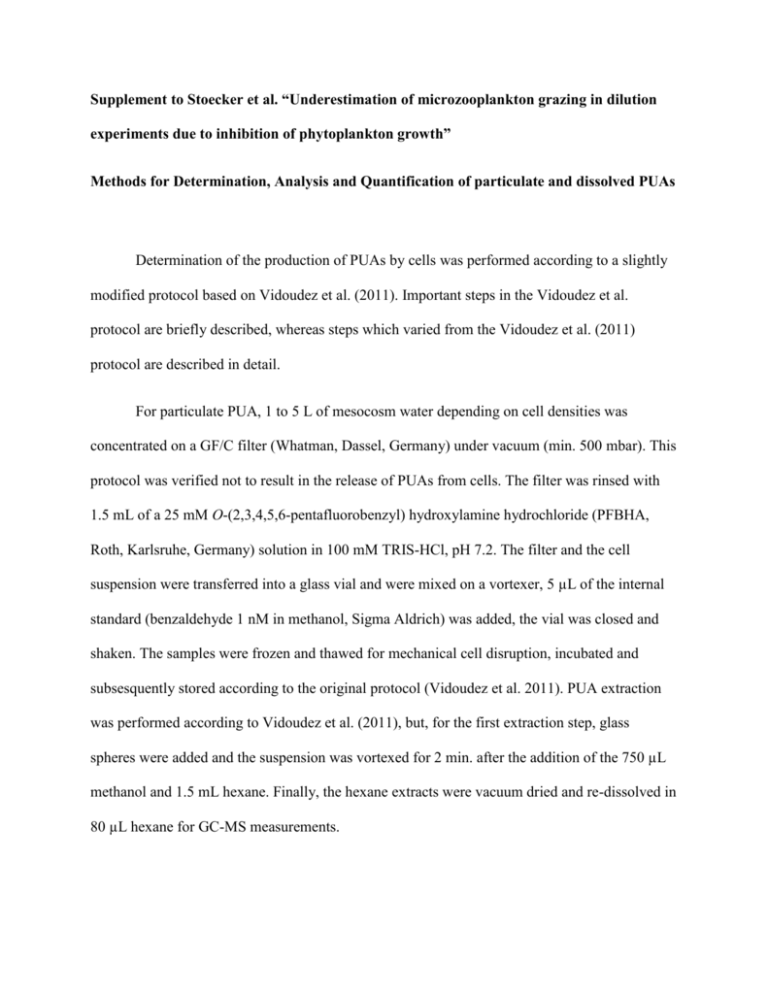
Supplement to Stoecker et al. “Underestimation of microzooplankton grazing in dilution experiments due to inhibition of phytoplankton growth” Methods for Determination, Analysis and Quantification of particulate and dissolved PUAs Determination of the production of PUAs by cells was performed according to a slightly modified protocol based on Vidoudez et al. (2011). Important steps in the Vidoudez et al. protocol are briefly described, whereas steps which varied from the Vidoudez et al. (2011) protocol are described in detail. For particulate PUA, 1 to 5 L of mesocosm water depending on cell densities was concentrated on a GF/C filter (Whatman, Dassel, Germany) under vacuum (min. 500 mbar). This protocol was verified not to result in the release of PUAs from cells. The filter was rinsed with 1.5 mL of a 25 mM O-(2,3,4,5,6-pentafluorobenzyl) hydroxylamine hydrochloride (PFBHA, Roth, Karlsruhe, Germany) solution in 100 mM TRIS-HCl, pH 7.2. The filter and the cell suspension were transferred into a glass vial and were mixed on a vortexer, 5 µL of the internal standard (benzaldehyde 1 nM in methanol, Sigma Aldrich) was added, the vial was closed and shaken. The samples were frozen and thawed for mechanical cell disruption, incubated and subsesquently stored according to the original protocol (Vidoudez et al. 2011). PUA extraction was performed according to Vidoudez et al. (2011), but, for the first extraction step, glass spheres were added and the suspension was vortexed for 2 min. after the addition of the 750 µL methanol and 1.5 mL hexane. Finally, the hexane extracts were vacuum dried and re-dissolved in 80 µL hexane for GC-MS measurements. For dissolved PUAs, 5 µL of internal standard (benzaldehyde, 1 mM in methanol) was added to 1 L of the mesocosm water in a PP bottle. The samples were filtrated on a GF/C filter (Whatman, Dassel, Germany) under vacuum (max. 500 mbar) and the filtrate was transferred through teflon tubing with a flow rate of circa 1 L h-1 to a 3 mL EASY® solid phase extraction cartridge (Macherey-Nagel, Düren, Germany) which had been pretreated with 1 mL of a PFBHA solution in 100 mM TRIS-HCl, pH 7.2. The liquid retained in the cartridge was reduced by applying overpressure from an empty syringe to the cartridge. EASY® cartridges were then washed with 2 x 2 mL deionized water, dried in vacuum (circa 600 mbar) and eluted into glass vials with 2 x 2 mL of a 5 mM solution of PFBHA in methanol. After incubation for 1 h at room temperature, samples were stored at -20°C. The PUA extraction was accomplished according to Vidoudez et al. (2011b). Finally, the hexane extracts were vacuum dried and re-dissolved in 80 µL hexane for GC-MS measurements. The identical protocol without the GF/C filtration step was followed for the determination of the purification success of charcoal cartridges (see below). The samples were measured with GC/MS (ISQ Trace GC Ultra, Thermo Fisher, Dreieich, Germany) equipped with a 0.25 mm x 30 m DB-5MS GC column (Agilent, Böblingen, Germany) in electron impact (EI 70 eV) mode. Data were evaluated with the Xcalibur Quan Browser (2.1.0 SP1.1160). Identification of PUAs was based on the retention time compared with standards (except octatrienal that was identified based on its characteristic mass spectrum) and major fragment ions as described in Vidoudez et al. (2011). The quantification was based on the ratio between the molecular ions of the derivatized PUAs (m/z 319 for octadienal, 317 for octatrienal, 347 for decadienal) or the major fragment m/z 276 (present in all measured PUAs) for octadienal and the fragment m/z 271 of the derivatized internal standard. The following quantification standards were produced and derivatized, 0.5, 1, 2, 5, 10, 20, 50, 75 nM from heptadienal (<97%, Sigma-Aldrich), octadienal (96+%, SigmaAldrich) and decadienal (85%, Sigma-Aldrich) according to the original protocol (Vidoudez et al. 2011). The same calibration as for octadienal was used for octatrienal. The selected quantification curves for each standard were dependent on the detection limit of each PUA and the maximal amount found in the sample with the highest concentration. The GC temperature program for the separation was 60°C (held for 2 min) then ramped with a rate of 8°C min-1 to 240°C and then with a rate of 15°C min-1 to 300°C (held for 3 min). Reference Vidoudez C., R. Cascotti, M. Bastianini, and G. Pohnert. 2011. Quantification of dissolved and particulate polyunsaturated aldehydes in the Adriatic Sea. Marine Drugs 9: 500-513 doi:10.3390/md9040500.
